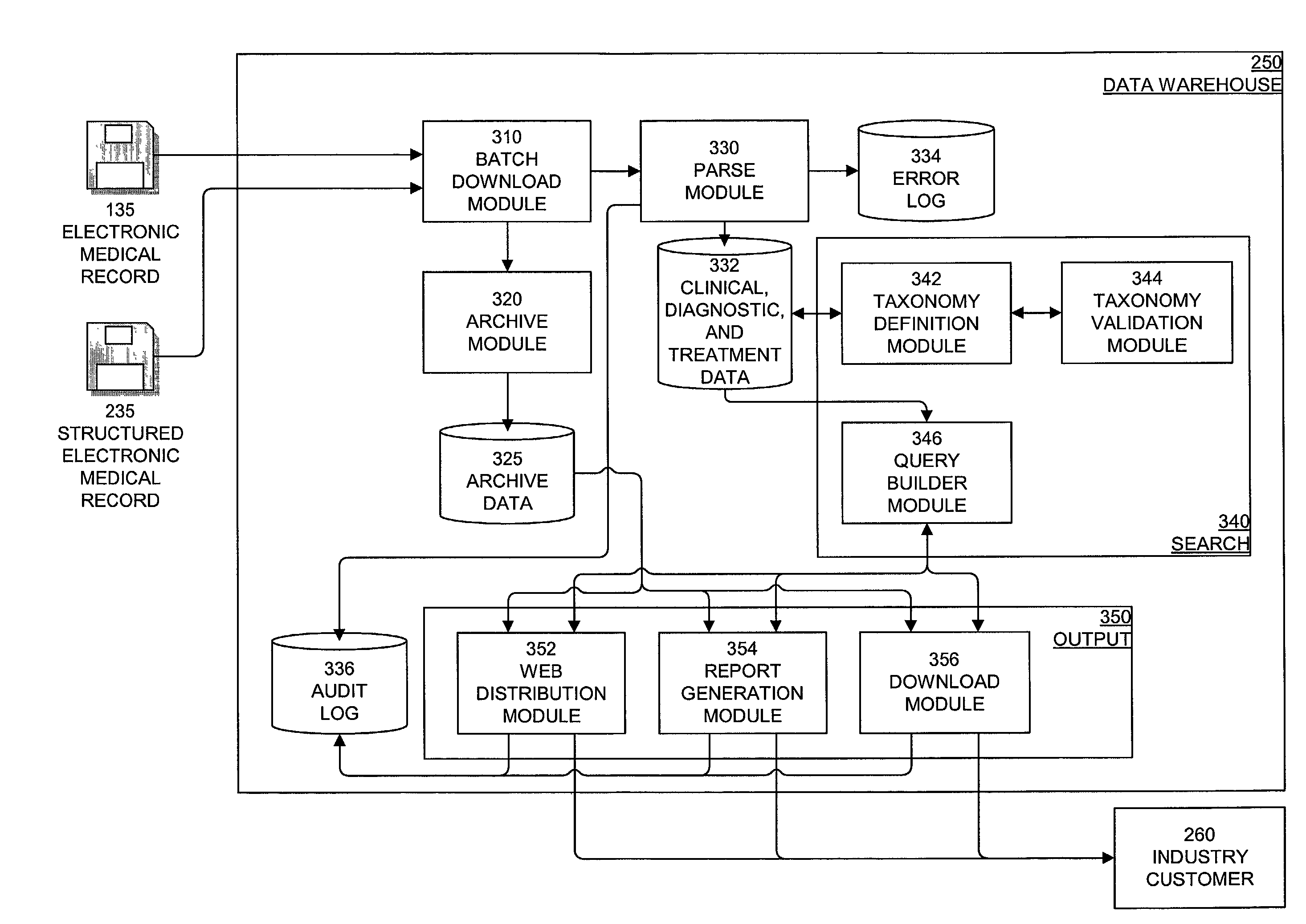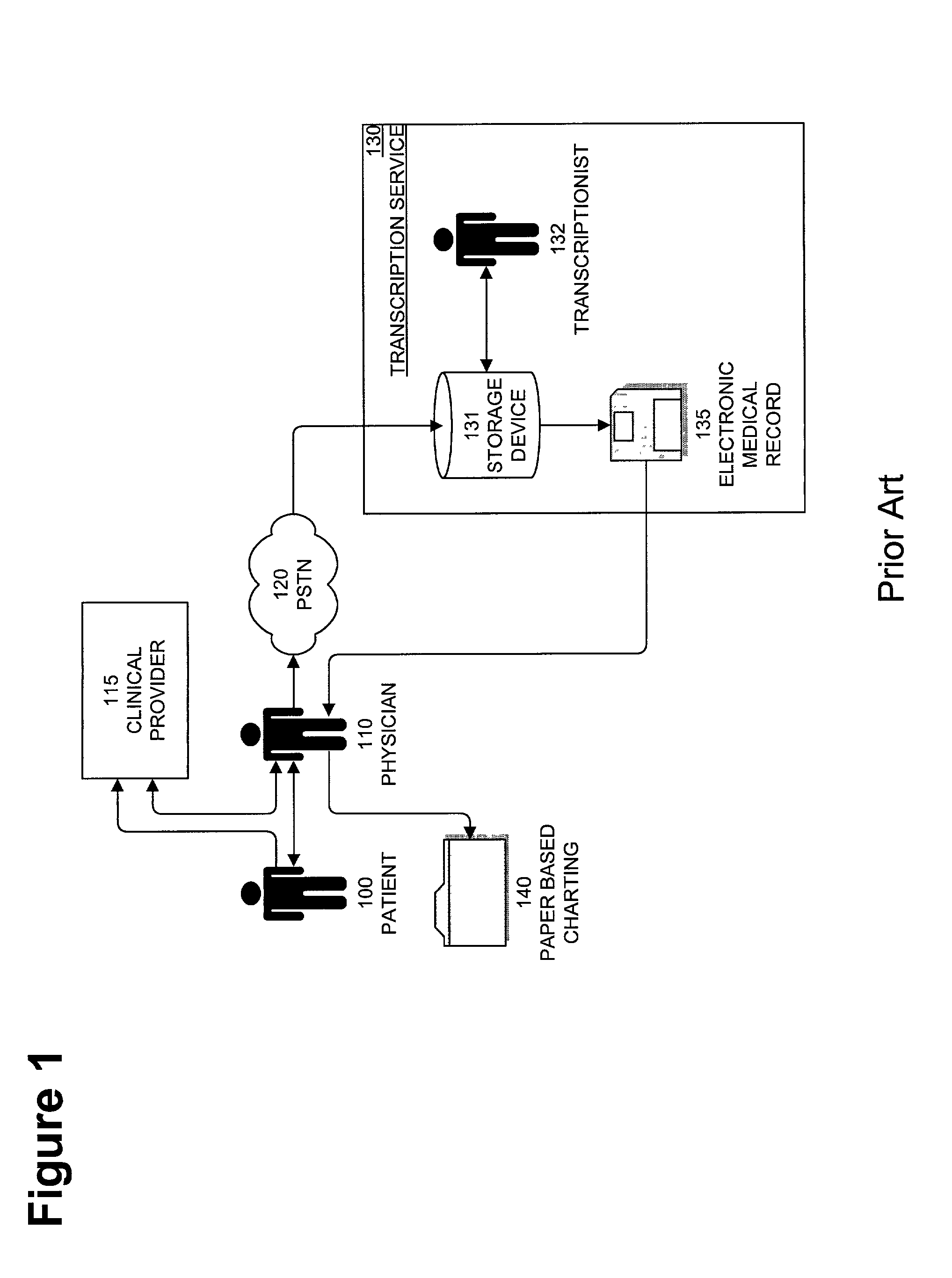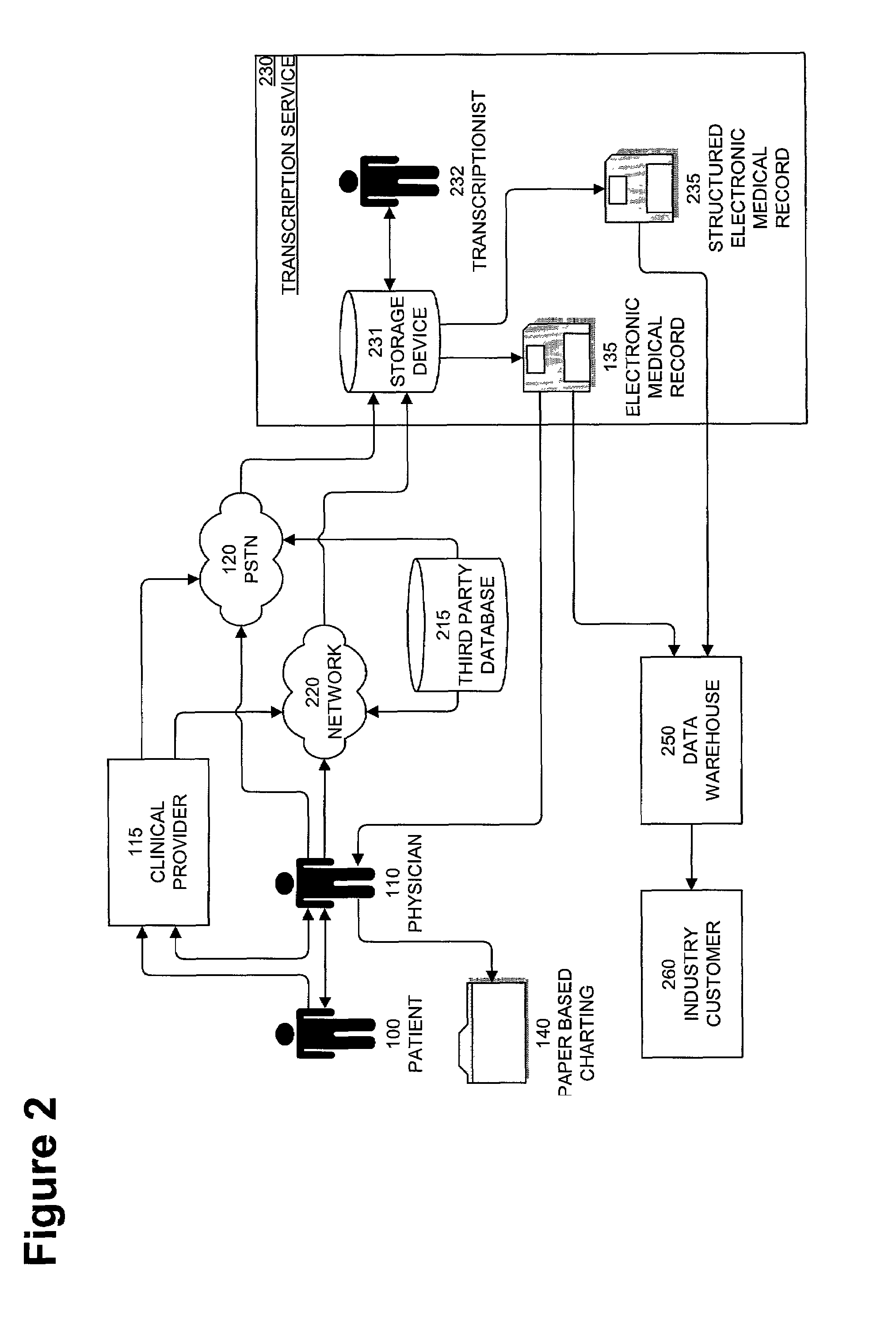System, method, and apparatus for storing, retrieving, and integrating clinical, diagnostic, genomic, and therapeutic data
a technology for applied in the field of system, method and apparatus for storing, retrieving, and integrating clinical, diagnostic, genomic and therapeutic data, can solve the problems of slow adoption of technology, inability to maintain compliance with new healthcare regulations and practice guidelines, and inability to use paper-based systems
- Summary
- Abstract
- Description
- Claims
- Application Information
AI Technical Summary
Benefits of technology
Problems solved by technology
Method used
Image
Examples
example 1
Lone QT Syndrone
[0103]A physician enters the following clinical information into a system for determining a patient's disease risk or susceptibility type and / or drug response polymorphism:[0104]A 42-year-old patient has a family history of cardiac arrest in one first and one second degree relative. Patient has had an occasional syncopal episode. His clinical evaluation is normal. His EKG is normal apart from slight lengthening of his QT interval. Patient takes an antihistamine for seasonal allergies.
[0105]The system notifies the physician that the patient may have partially penetrant Long QT syndrome. Genetic testing is recommended and the patient undergoes genetic testing for one of the 5 genes associated with Long QT syndrome. The patient is found to have a mutation in LQT2, which effects potassium channels. The system recommends avoidance of all drugs that prolong cardiac repolarization such as antiarrythmics, gastrokinetics, antipsychotics, antihistamines and certain antibacteri...
example 2
Arthritis and Anemia—Thiopurine S-Methyltransferase Mutation
[0106]A physician enters the following clinical information into a system for determining a patient's disease risk or susceptibility type and / or drug response polymorphism:[0107]A 70-year-old woman has been placed on azathioprine for arthritis by her GP. Three months after beginning treatment her doctor notes that she is anemic. Work up for GI bleeding is negative.
[0108]The system generates a result set that includes a suggestion to the physician to test the patient for a mutation in her Thiopurine S-Methyltransferase (TPMT) Gene Locus. The patient is found to be heterozygous for mutant TPMT which results in severe hematopoietic toxicity and resultant anemia. The system generates a result set that includes a suggestion to the physician that the patient has a genetic polymorphism, which makes her intolerant to thiopurine medications, and suggest alternative non-TPMT metabolized anti-arthritic medication.
example 3
Colonic Neoplasia and Rapid Metabolic Phenotype for Acetyltransferase and Cytochrome P4501A2
[0109]A physician enters the following clinical information into a system for determining a patient's disease risk or susceptibility type and / or drug response polymorphism:[0110]A 50-year-old male patient undergoes screening colonoscopy. The patient has a family history of colon cancer. Dietary history records that he consumes red meat at almost every meal. He is found to have eight polyps, which are removed. In view of his polyps and family history his gastroenterologist recommends yearly colonoscopy. The system generates a result set that includes a suggestion to the physician to test for polymorphisms in N-acetyltransferase-2 (NAT2) and hepatic cytochrome P4501A2 (CYP1A2). Patient is found to have polymorphism in both genes resulting in the patient being a rapid metabolizer of heterocyclic amines. Heterocyclic amines are found in over cooked red meat. Rapid metabolizers of heterocyclic ami...
PUM
 Login to View More
Login to View More Abstract
Description
Claims
Application Information
 Login to View More
Login to View More - R&D
- Intellectual Property
- Life Sciences
- Materials
- Tech Scout
- Unparalleled Data Quality
- Higher Quality Content
- 60% Fewer Hallucinations
Browse by: Latest US Patents, China's latest patents, Technical Efficacy Thesaurus, Application Domain, Technology Topic, Popular Technical Reports.
© 2025 PatSnap. All rights reserved.Legal|Privacy policy|Modern Slavery Act Transparency Statement|Sitemap|About US| Contact US: help@patsnap.com



